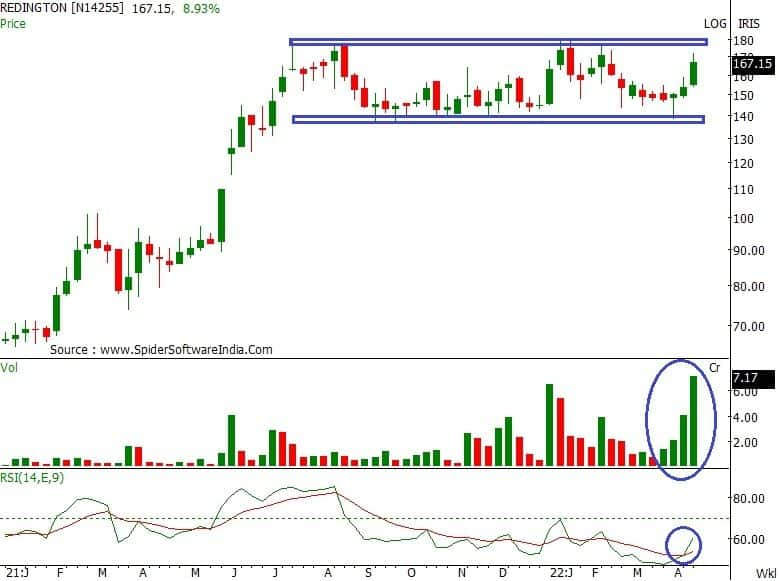
Vinay Rajani of HDFC Securities
“Since Nifty made bearish ‘Engulfing candlestick’ on the monthly charts in December 2022 and India VIX is trading at the lower-end currently, the chances of directional move on the downside is more than on the upside,” Vinay Rajani of HDFC Securities tells Moneycontrol in an interview. To negate the downtrend, Nifty has to surpass 18,500 on a closing basis, the CMT charter holder adds.
The Senior Technical and Derivative Analyst with over 16 years of experience in the financial markets advised the option traders to focus more on buying options than selling as Nifty may end the consolidation soon and volatility is expected to pick up.
The worst seems to have been discounted in the price of technology stocks, he feels. “However, running corrections cannot be ruled out and therefore we advise accumulating IT stocks on dips, says Rajani.
Edited excerpts:
Do you expect the Nifty to break the range on the upside or will it remain in the same range for another month?
Nifty is all set to show a directional move very soon. Nifty has been trading in the narrow range of 18,265-17,761 for the last four weeks. The market has been choppy these days, where there has been no directional trend with follow-up moves. Volumes in stocks and turnover in exchange have gone down since the start of January.
The Indian markets have been underperforming most of the emerging markets. As we approach the important event of Budget, the chance of a sharp move is on the cards. Since the movement has been non-directional before the event and the range is getting contracted, there are less chances of the same trend being extended in the Nifty. The question is ‘In which direction the move would come?’ Since Nifty made a bearish ‘Engulfing candlestick’ on the monthly charts in December and India VIX is trading at the lower-end currently, the chances of a directional move on the downside are more than on the upside. Option traders should focus more on buying options than selling as Nifty may end the consolidation soon and volatility is expected to pick up. Equity portfolios should be hedged by buying Put options in the index. Below 17,700, the Nifty would witness bearish momentum. To negate the downtrend, Nifty has to surpass 18,500 on a closing basis.
The Nifty IT index was one of the outperformers for the week gone by. Do you think the northward journey looks sustainable?
The majority of the largecap IT stocks have shown positive moves after their quarterly earnings announcements till now. The technical setup of the IT index seems stronger than Nifty and this outperformance is expected to continue. The Nifty IT index was the major loser in the year 2022.
The US technology index Nasdaq also plunged the most as compared to other world indices. The worst seems to have been discounted in the price of technology stocks. However, running corrections cannot be ruled out and therefore we advise accumulating IT stocks on dips. We would give more preference to largecap IT stocks than midcap IT stocks.
As you said more than 70 percent of stocks in Nifty500 are above 200 DMA, does it mean the trend is up for the short to medium term?
Any reading above 50 percent is considered to be a bullish sign for underlying. However, instead of looking at just the number of stocks above 200 DMA, we should observe the trend of this indicator. In December 2022, the percentage of stocks above 200 DMA in Nifty was at 94 percent, which has gradually come down to 72 percent currently. That means the indicator is showing a downward trend for Nifty stocks. As far as the broader market is concerned, the percentage of stocks above 200 DMA for the Nifty 500 index has reached 51 percent from 68 percent in December 2022. To sum it up, we can say that breadth is gradually weakening in the Indian market.
Can you explain the importance of Bollinger bands in technical analysis?
Bollinger bands help in determining whether prices are high or low on a relative basis. To reflect recent volatility in the market, the width of the band will increase and decrease accordingly. The narrower the bands are, or the closer they are to one another, the lower the perceived volatility of the financial instrument will be. On the other hand, the perceived volatility is higher when the bands are wider, or further away from one another. When the market is quiet, the bands contract and when the market is loud, the bands expand. Bollinger band is a very useful indicator which can analyse the underlying with both as a momentum indicator, through which traders can identify fresh breakouts, and as an oscillator, through which support-resistance and trend reversals can be identified. A 20-period is a famous parameter for using Bollinger bands on charts.
Do you think the rupee is unlikely to break the 81 mark against the US dollar which it has been holding quite strongly for the last several days?
The rupee is likely to appreciate further against the dollar. After forming multiple tops at 83 against US dollar odd levels, USDINR pair has turned south. On the chart, the trend of the pair has turned bearish. In the international markets, the ICE Dollar Index has broken down below the long-term support of 103. The weakness in the dollar against major currencies of the world could push the USDINR towards the next support of 79.50 in the coming days.

